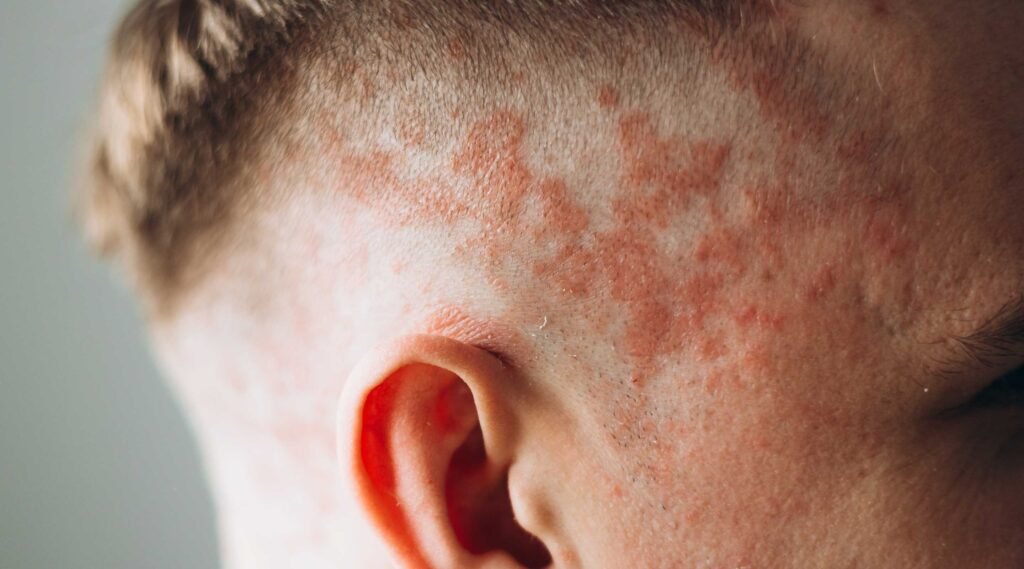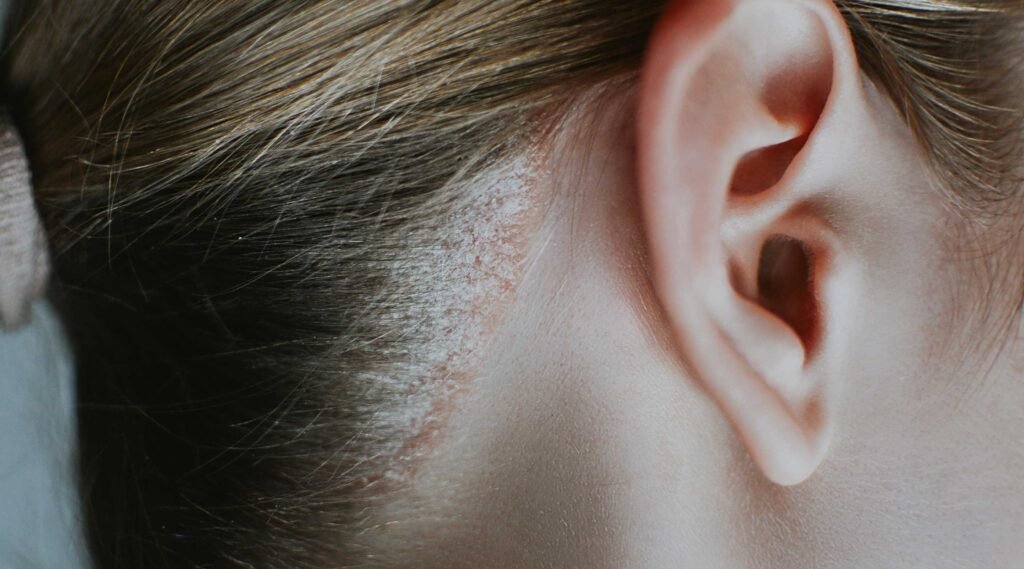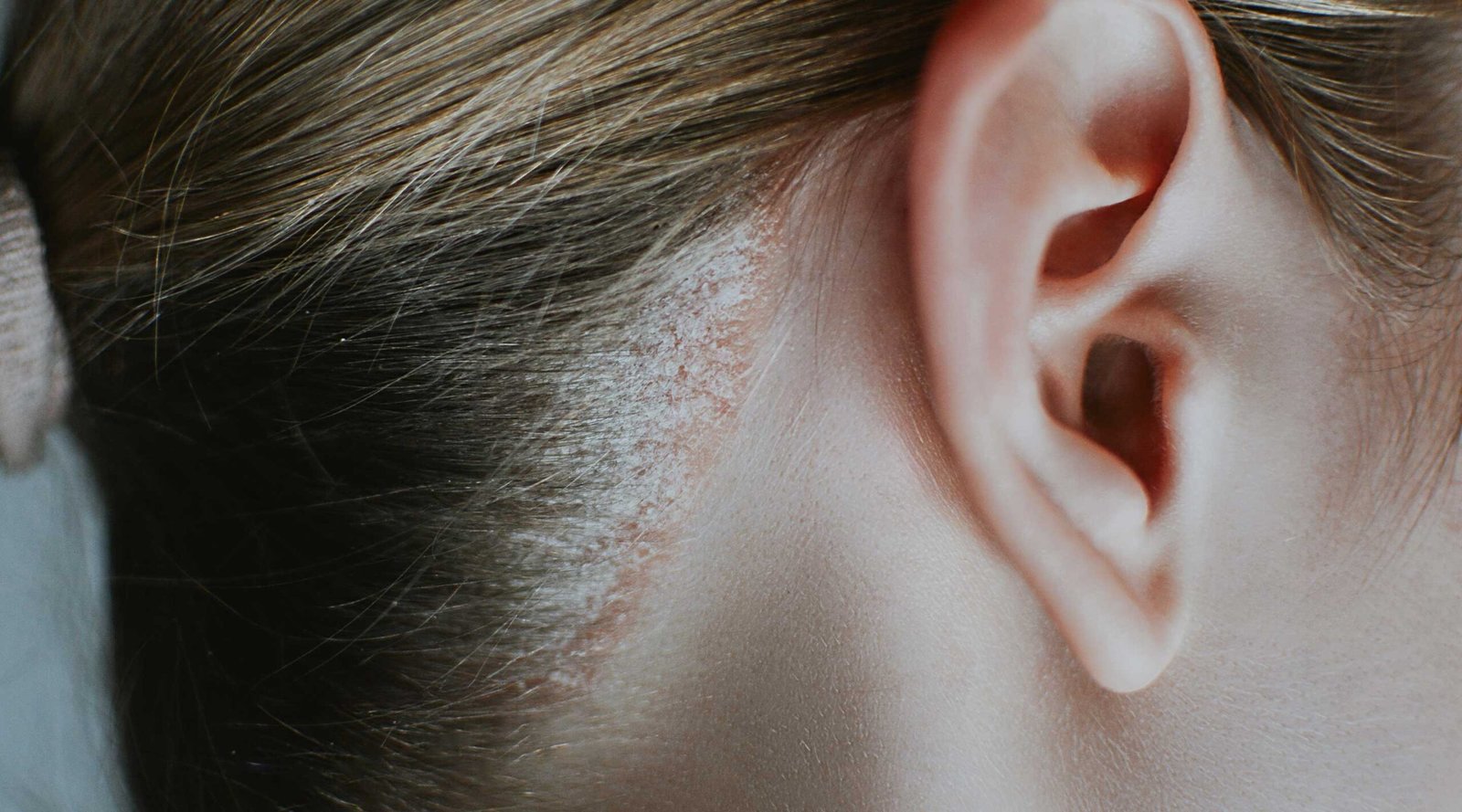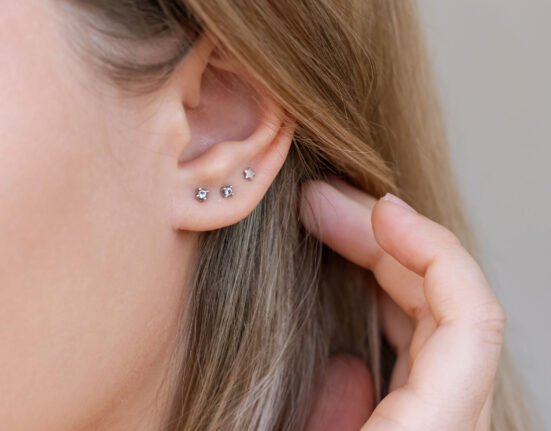Dermatitis vs Psoriasis on the Scalp: What’s the Difference?
Dermatitis and psoriasis are two common conditions that can cause an itchy, scaly, and red scalp — and are often mistaken for each other.
At first glance, they may seem similar, but their causes, appearance, and treatments are quite different. Understanding the distinction between dermatitis and psoriasis is essential for choosing the right care for your scalp.
Dermatitis vs Psoriasis on the Scalp: Similar but Not the Same

Both scalp dermatitis and scalp psoriasis are inflammatory skin conditions that cause dryness, itchiness, and flaking.
Because of their overlapping symptoms, they’re often mistaken for severe dandruff. However, there are key differences that help tell them apart.
Scalp psoriasis typically presents as thick, rough, reddish patches covered with silvery scales. The plaques may extend beyond the hairline and appear on other body parts such as the elbows, knees, or back.
In contrast, scalp dermatitis causes greasy patches that may appear white-yellow, red, or brownish. It usually affects areas with high oil gland activity — the scalp, sides of the nose, eyebrows, behind the ears, and the upper chest.

Scalp dermatitis is sometimes considered a more advanced form of dandruff. Regular dandruff causes dry flakes without inflammation, while dermatitis results in redness, intense itching, and greasy buildup.
Sebopsoriasis: When Both Conditions Occur Together
Interestingly, some people experience sebopsoriasis, a combination of seborrheic dermatitis and psoriasis on the scalp.
It’s characterized by silvery-white flakes accompanied by inflammation. Because it involves two different inflammatory mechanisms, sebopsoriasis is often harder to treat and requires a more careful, tailored approach.
How to Tell the Difference Between Dermatitis and Psoriasis
Scalp Psoriasis Signs
- Thick, red patches covered with silvery-white scales.
- Plaques may extend beyond the hairline.
- Itching, burning, or pain.
- It may also affect the nails, causing thickening, pitting, or ridges.
Scalp Dermatitis Signs
- Oily scalp with white or yellowish flakes.
- Itching and general scalp discomfort.
- Often appears on the face (around the nose, eyebrows, or beard), chest, or body folds.
Causes of Scalp Dermatitis and Psoriasis
Scalp dermatitis is commonly caused by the overgrowth of Malassezia yeast on the scalp. Triggers such as stress, fatigue, and weather changes can worsen symptoms.
Meanwhile, scalp psoriasis is an autoimmune disorder that speeds up the skin cell renewal process, causing thick plaque buildup. It’s a chronic condition that may flare up periodically.
How to Manage Scalp Dermatitis and Psoriasis

Although neither condition can be completely cured, symptoms can be managed with proper care and consistency. Here are some commonly recommended treatments:
- Use medicated shampoos containing coal tar, ketoconazole, salicylic acid, or zinc pyrithione to reduce inflammation and scaling.
- Apply topical corticosteroid lotions or creams as prescribed by a doctor to relieve irritation and itching.
- Consider phototherapy (light therapy) for stubborn psoriasis that doesn’t respond to topical treatment.
- Maintain a balanced diet and manage stress, as both play significant roles in scalp health.
- Avoid excessive scratching, which can worsen irritation and cause wounds.
If your scalp condition doesn’t improve with over-the-counter treatments, see a dermatologist. A proper diagnosis will determine whether you’re dealing with dermatitis, psoriasis, or a mix of both.
An itchy, flaky, and red scalp may be more than just dandruff. Both scalp dermatitis and psoriasis can affect your comfort and confidence — but with the right treatment, they can be effectively controlled.
Treat your scalp gently, use soothing products to calm inflammation, and consult a doctor if symptoms persist.
With consistent care, your scalp can recover, and flakes will soon be a thing of the past.
References
Mayo Clinic. Accessed in 2025. Scalp psoriasis vs. seborrheic dermatitis: What’s the difference?
WebMD. Accessed in 2025. Seborrheic Dermatitis and Psoriasis: What’s the Difference?














Leave feedback about this